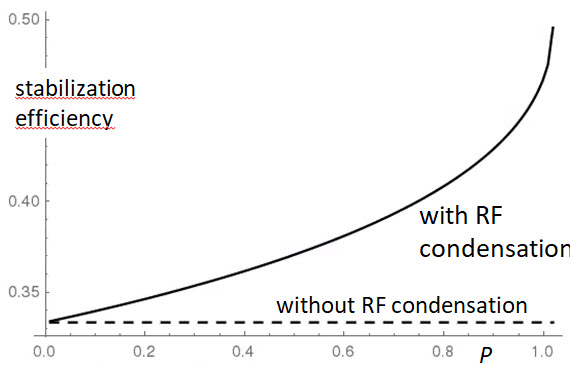Speaker
Description
The 2018 ITER Research Plan states that “Operation of ITER will have to strongly focus on avoiding disruptions with a high success rate and on mitigating those in which avoidance techniques fail” (1). We address the situation where an off-normal event leads to the appearance of a large island that threatens to cause a disruption. On JET, 95% of the disruptions are preceded by the appearance of large locked islands (2). A nonlinear effect that we have identified, “RF current condensation”, can increase the efficiency of RF current drive stabilization of islands, allowing the stabilization of larger islands than would otherwise be possible(3).
The use of ECCD for off-normal event response will involve larger islands and higher ECCD powers than routine active stability control. In this context, the sensitivity of the power deposition and electron acceleration to the temperature perturbation in the island can be important. There is a nonlinear feedback on the temperature in the island, with the increased power deposition causing a further increase in temperature. The combination with the sensitivity of the RF-driven current to the temperature can produce the RF current condensation effect.
 Fig. 1 shows the predictions of a simple model(4) to estimate the effect of RF condensation on the efficiency, using a metric introduced in Ref. 4. The figure shows the stabilization efficiency as a function of normalized power, $P$. There is a rapid increase in the efficiency as $P$ approaches a bifurcation point of the nonlinear thermal diffusion equation in the island, above which we must include additional physics to determine the saturation of the temperature, such as depletion of the wave energy(5) or profile stiffness above the microinstability threshold(6). The efficiency increases further. Hysteresis behavior arises that can cause stabilized islands to shrink to smaller widths than would otherwise be the case.
Fig. 1 shows the predictions of a simple model(4) to estimate the effect of RF condensation on the efficiency, using a metric introduced in Ref. 4. The figure shows the stabilization efficiency as a function of normalized power, $P$. There is a rapid increase in the efficiency as $P$ approaches a bifurcation point of the nonlinear thermal diffusion equation in the island, above which we must include additional physics to determine the saturation of the temperature, such as depletion of the wave energy(5) or profile stiffness above the microinstability threshold(6). The efficiency increases further. Hysteresis behavior arises that can cause stabilized islands to shrink to smaller widths than would otherwise be the case.
For lower hybrid waves, the condensation effect narrows the generally broad deposition, and it can lead to automatic, passive stabilization of islands(7). The stabilizing effect can be further enhanced by pulsing the power(8).
A high fidelity simulation code has been constructed, with power deposition along EC ray trajectories calculated by GENRAY mapped into a magnetic island(9). Calculations find that the ITER plasma will be in a regime where the RF condensation effect can be important. The code is also being used to design scenarios for experimental verification of the effect.
Supported by U.S. DOE contracts DE-AC02-09CH11466, DE-SC0016072, DE-FC02-04ER54698, and DE-FG02-91ER54109.
(1) ITER Technical Report ITR-18-003 (2018).
(2) S. N. Gerasimov et al, IAEA FEC, IAEA-CN-258/151 (2018).
(3) A. Reiman and N. Fisch, Phys. Rev. Lett. 121, 225001 (2018).
(4) C. Hegna and J. Callen, Phys. Plasmas 4, 2940 (1997).
(5) E. Rodriguez, A. Reiman and N. Fisch, Phys. Plasmas 26, 092511 (2019).
(6) E. Rodriguez, A. Reiman, N. Fisch, Phys. Plasmas 27, 042306 (2020).
(7) S.J. Frank, A Reiman, N. Fisch and P. Bonoli, https://arxiv.org/abs/2004.10794
(8) S. Jin, N. Fisch, and A. Reiman, http://arxiv.org/abs/2003.10896
(9) R. Nies, A. Reiman, E. Rodriguez, N. Bertelli, N. Fisch, manuscript in preparation.
| Member State or International Organization | United States of America |
|---|---|
| Affiliation | U. S. Department of Energy |
